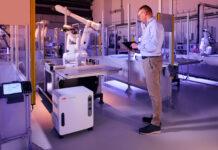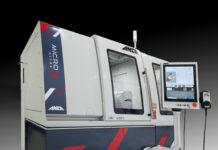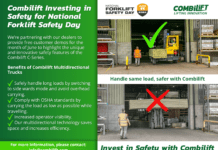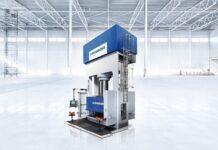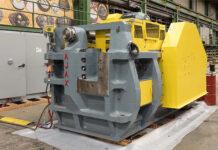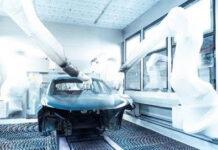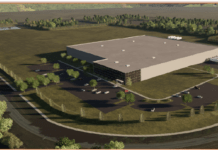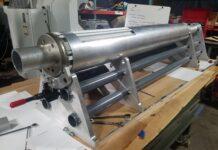The impact of Industry 4.0 and its adjacent technologies continues to permeate industrial processes, creating a new world of opportunities for product and service transformation. A key driver of this is the successful integration, synchronization and monitoring of highly efficient robots within current production networks. Advances in artificial intelligence (AI), simulation and modular hardware provide even greater capability and accuracy, opening the door to the Internet of Robotic Things (IoRT) – where robot information and other device data are combined in real time to calculate alternative courses of action for objects in the physical world. Streamlining processes and optimizing capacity at this scale can only happen, however, if robots are leveraged in the first place.
The Robotic Edge: Robotic Workflow Preparation
Whether a new user is wanting to implement a more efficient production path from end-to-end or a manufacturer is looking to refine an operational bottleneck by adding capacity to current automation, the use of flexible robots with intuitive software platforms can deliver a variety of productivity gains. From faster cycle times for increased production throughput to reduced part rework for improved product quality, the meticulous planning for robotic automation is key to transformative success. Consider the following:
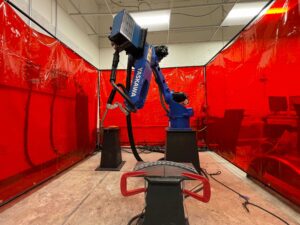
Understand Current Processes
While this concept may seem straightforward, The Robotic Edge, a lot of thought should go into it. First, it is important to have a clear understanding about how much robot implementation is required. Will automation be utilized end-to-end, integrated for a single step or somewhere in between? If for a single- or multi-step process, know the main reason(s) for robot usage. If the task at hand is dull, dirty, dangerous or difficult, it is most likely an ideal candidate for a highly flexible robot that can be added to a current workcell or production space.
Next, consider how parts are transferred. How controlled are infeeds and outfeeds? While random configurations can be automated, this typically adds more complexity to the system design and may incur additional cost. Therefore, knowing your overall budget and keeping a target payback period in mind will help guide the solution selection process.
With these selections in mind, have an idea of how “smart” the system needs to be. Is new ground being broken with the task at hand that may require the use of cutting-edge technology? Or, are there proven examples of automation similar to what is needed? Doing a little bit of research can go a long way to guiding the system design conversation with a robot supplier or integrator.
From stationary systems for machine tending to mobile platforms for warehouse picking, and everything in between, a range of solutions exists to optimize operations. Keep in mind, if a current production layout uses more fixed or hard automation, the less complicated it should be to implement robots. If more inputs or human-robot interaction are required, integration is typically more difficult. Other concepts such as tooling and safety guarding should also be weighed.
Outline Key Objectives for The Robotic Edge
Before adding robots (or any piece of capital equipment for that matter) to a process, it can be helpful to understand the “why” behind the need. Does the motivation come from labor shortages, production spikes, quality concerns or capacity issues? This often helps determine the use of a slower yet perfect system versus a faster system with limitations. Along the same lines, how will short-term or long-term success be measured? What key performance indicators are important? For this reason, a solid grasp for concepts like target cycles per minute/day/hour and acceptable failures per hour/day/minute are advised.
A clear picture of the ultimate end goal is always helpful. Whether it is to gain competitive advantage, raise additional revenue, bolster employee morale or a mix of reasons, knowing the expected outcome helps drive the project from start to finish.
Garner Employee Support
In conjunction with knowing the required objectives, having a team of motivated individuals aligned with the plan and willing to embrace robotic automation is highly suggested. In fact, helping current employees see the quality of life benefits and job advancement opportunities that robots bring to the table is a great way to garner the human resources needed to make implementation happen.
Some companies may choose to appoint, or even hire, a “workcell champion” – an employee fully dedicated and accountable for integration, programming, utilization and maintenance of the robot system. This valuable team member can be instrumental and help garner support from other stakeholders for managing deliverables and meeting deadlines.
Borrow Automation Brilliance
In most instances, past performance is the best predictor of future success. This is why most companies partner with an experienced robot supplier or integrator, rather than reinventing the wheel. This also saves on effort, time and resources. When choosing the ideal robot advisor, evaluate their technical prowess and ask about the technical feasibility of the project at hand. If this cannot be properly addressed, finding another option may be in order.
For those still on the fence about robotic automation, attending regional tradeshows, reading industry publications and visiting automated factories can provide key insights for how to add robots to certain processes.
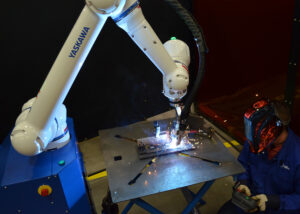 Popular Robot Additions
Popular Robot Additions
While adding robots to current production can range in application depending on industry and process requirements, several tasks that are commonly aided by robotic automation include:
3D Printing
To reduce lead times, many fabricators are turning to 3D printed parts made on site. Just as next generation 3D printers with advanced servo technology offer advanced motion control over stepper motors, robots are also transforming additive applications. Their excellent path performance, rigid mechanical structure and high dust protection (IP) ratings – combined with advanced anti-vibration control and multi-axis capability – make select six-axis robots an ideal choice.
Not only can highly flexible robots perform key actions for subtractive manufacturing and hybrid additive/subtractive methods, they are also well-equipped for complimentary 3D printing tasks. Whether handling printed parts in multi-machine installations, assisting with powder management or completing part finishing tasks like grinding, polishing, deburring or cutting, robots are ideal for front-end production tasks related to part fabrication.
Machine Tending
As mentioned, robust robots are well-suited for tending operations — The Robotic Edge. Frequently chosen for the robust ROI they can bring, modern day press transfer robots and control systems are used to optimize throughput, increase safety and maximize profit. Whether making agricultural, appliance or automotive components, and regardless of size or style (hydraulic or servo driven) of the press, heavy payload robots with heavy-duty drive systems and high vibration ratings help smooth the way for this highly demanding, repetitive task.
Another trending task frequently automated is the removal of parts from horizontal injection molding machines (IMMs). Streamlining the process even further, especially for small- to medium-sized parts, are easy-to-use electrical interfaces that maximize uptime and throughput.
Logistics Tasks The Robotic Edge
A growing number of advanced technologies are making it easier to configure, program and integrate robotic solutions for high-volume backbreaking tasks. This is particularly true for parcel sortation, piece-picking, case packing and palletizing. Feature-rich vision systems are being added to existing lines to help feed incoming parts or products, and are helping to instruct industrial and collaborative robots alike on how to manipulate each item. Strides in AI are also making this area a new possibility for automation despite the complex variety and shape.
Other unique tools for dynamic factory and distribution environments, such as highly adaptable autonomous mobile robots (AMRs) equipped with LiDAR sensors, are also meeting various production needs. These robotic platforms – equipped with robots, vision systems and custom end-of-arm tooling (EOAT) and more – autonomously maneuver with great ease and safety through a facility to perform assigned tasks like picking, sorting and on-demand material transport.
Dispensing Applications
Manufacturers that address existing coating, dispensing or painting issues via robotic automation often see tangible results. Consistent finishes, greater system uptime, reduced material waste and increased worker safety are common benefits. High-performance models with hollow-wrist designs and wide wrist motion ranges can accommodate large or complex shapes, while more scalable systems are optimized to execute the painting of smaller components.
Welding Workcells
Modernizing a current welding workstation via a single robot arm (or more) can be very effective at optimizing floorspace and increasing throughput. For example, if a manufacturer has a single robot workcell with a cycle time of ten minutes, adding a second robot can reduce the cycle time per part in half, while not increasing the footprint of the workcell.
Six-axis collaborative robots with built-in safety-rated Power and Force Limiting (PFL), can easily supplement manual welding or be rolled-up to large, heavy workpieces in a factory setting. Not only does this provide the weld capacity needed for smaller operations, but also, it maximizes floorspace in tight environments.
Continuous Improvement Mindset
The rapid pace of technological change is leveling the playing field for production operations. Companies that were once relegated to only automating “low-hanging fruit” are now able to integrate robots for more complex tasks. For many, this post-install optimization is more rewarding than the initial system, as it sets the company up for even greater operational control and efficiency.
The more devices on the factory floor, the more data that can be captured via networked production environments through user-friendly device management platforms. This provides the ability for data-driven optimized planning for preventative and predictive maintenance. Innovative software tools, like Yaskawa Cockpit™ – an edge server solution, use a leading OPC-UA to provide comprehensive insights that help decision makers gain a competitive edge. Moving forward, companies that integrate new methods and technologies, including robots, will have greater capacity to scale operations for meeting mission-critical business goals — The Robotic Edge.


